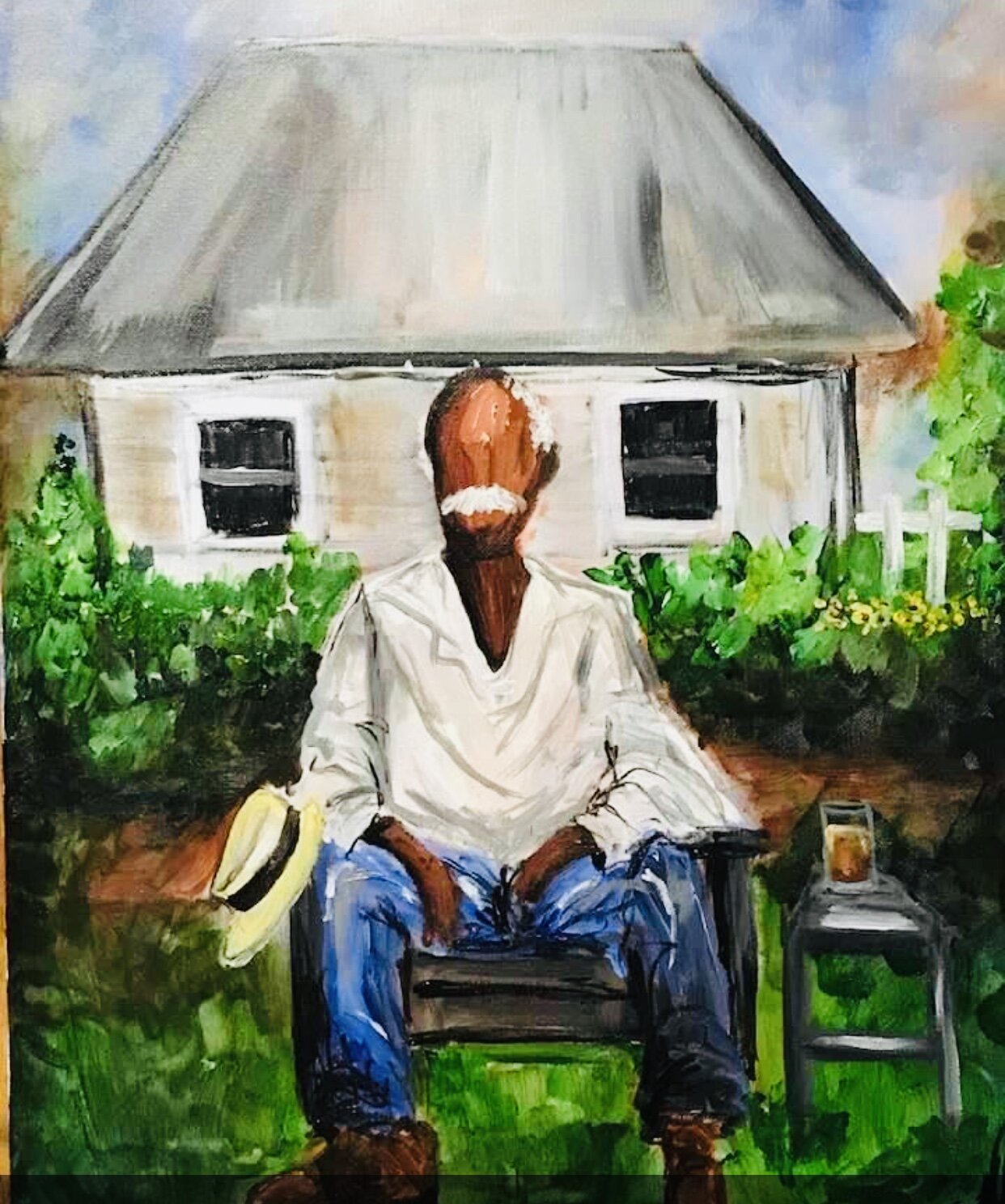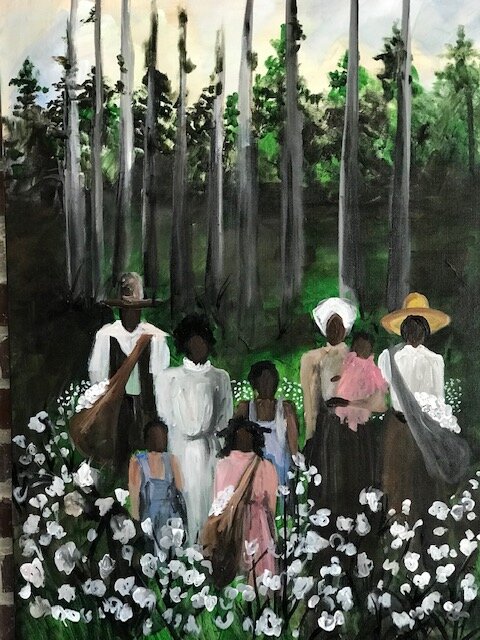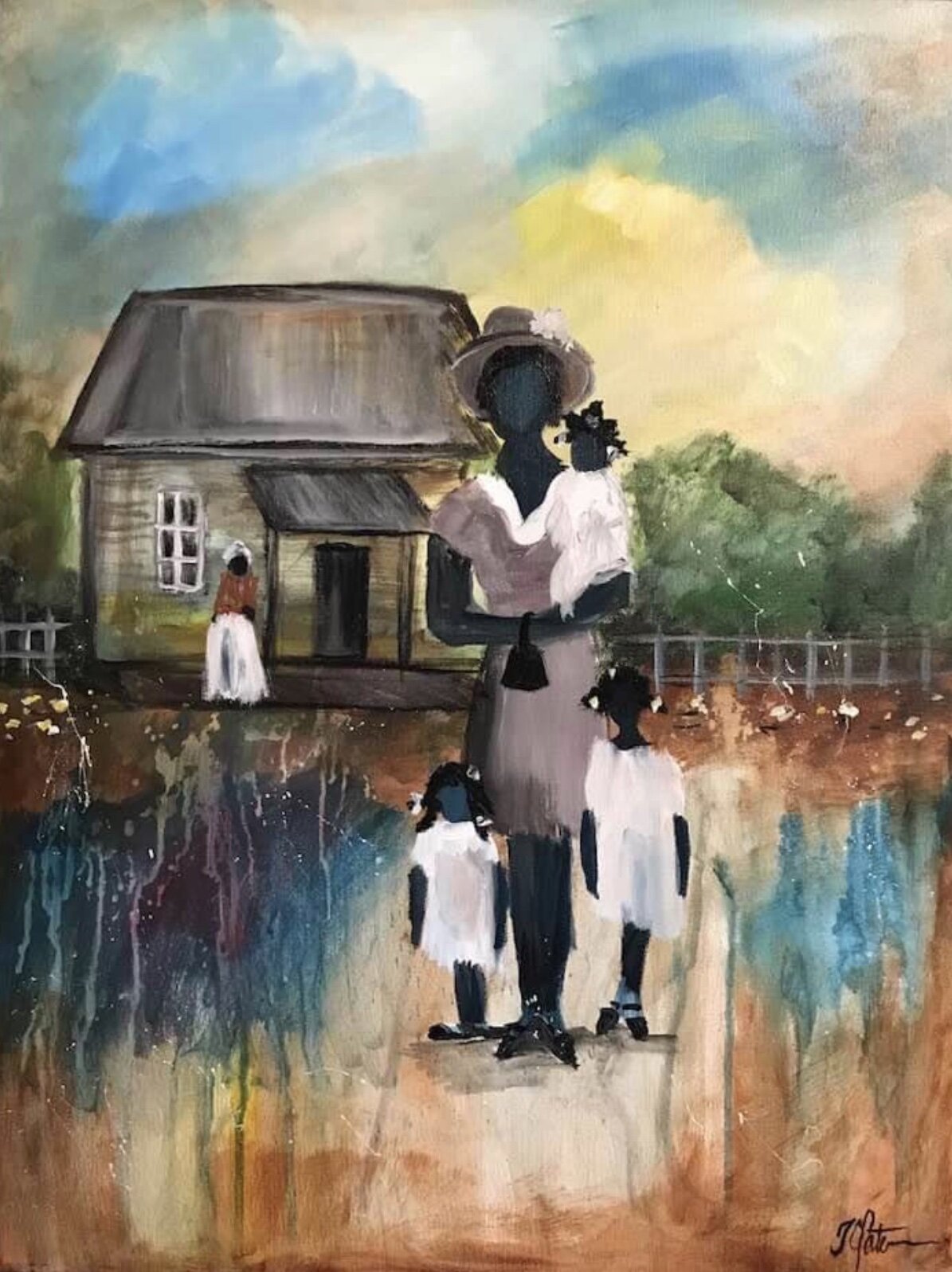Interview with artist Theresa Cates
Theresa Cates is a Little Rock artist who paints from her heart. Her joyful scenes are often filled with praise and worship music. If you are familiar with the North Little Rock area Argenta District, you might have seen some of Theresa’s colorful traffic control boxes painted with scenes of African American women at church. Recently, Theresa opened her own studio in the Little Rock River Market District where she displays her work and holds painting classes. More of Theresa’s work can be found at her website majesticmotions.com.
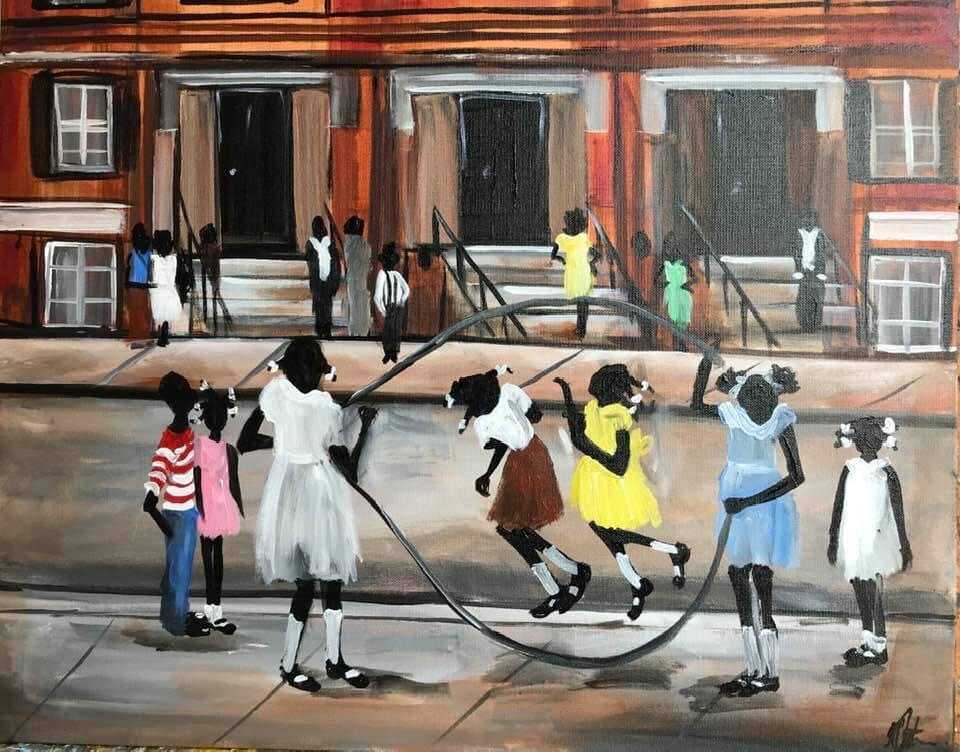
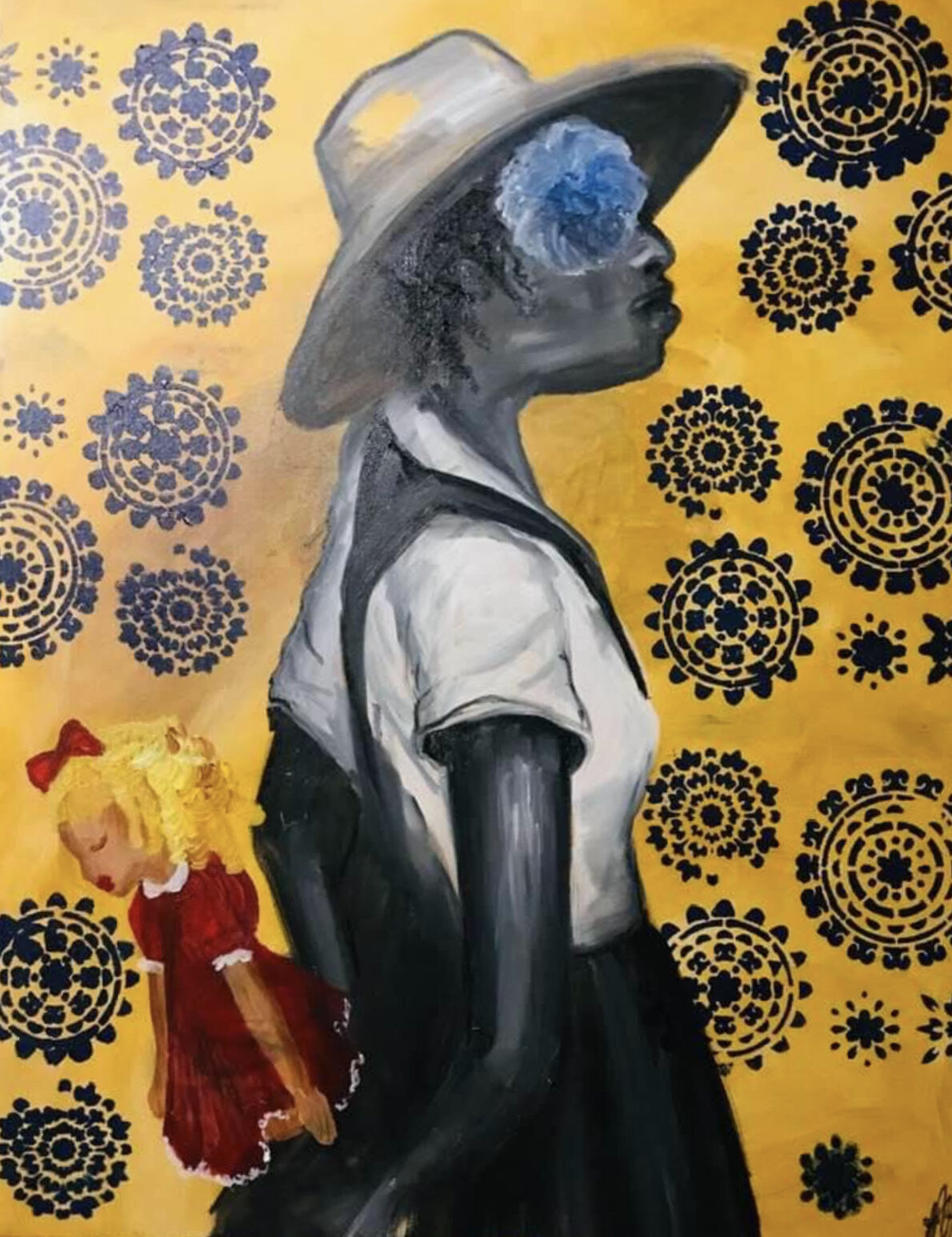
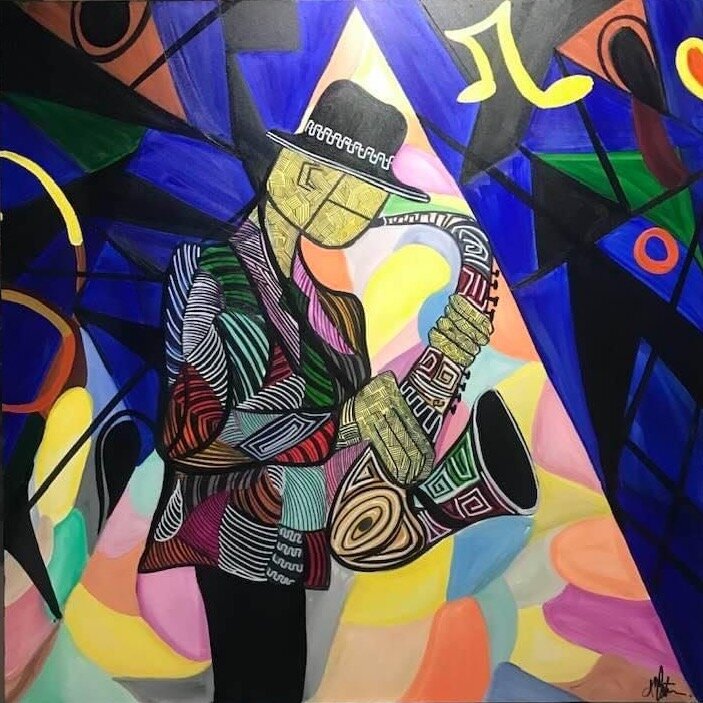
AAS: Theresa, first of all, congratulations on the opening of your new studio in the Little Rock River Market District. Tell me about yourself and that space.
Theresa outside her Little Rock River Market studio.
TC: I am originally from Arkansas, born and raised up in the North Little Rock area. I graduated from Ole Main (North Little Rock High). I am the mother of 6 children, 4 boys 34, 32, 28, and 21. I have a daughter who’s 17 and I have one bonus daughter 18. I began painting years ago while sitting on the floor of my home…at that point I wasn’t really serious…I later graduated to my dining room table and from there to my garage. I went years not knowing how to paint on an easel because I couldn’t afford one, so I was comfortable painting while holding the canvas in my hand. I took a leap of faith and stepped out to a studio space of my very own which is located at 300 River Market Ave, Suite 105 in Little Rock.
AAS: Would you talk about your Creative Strokes group painting classes? They sound like a lot of fun!
TC: Creative Strokes is an art party designed to bring out a person’s inner Picasso. The parties are made up with a group of at least 10 people but can accommodate up to 25 at a time. Each person gets their very own canvas to create, and all supplies they need like brushes, paint and apron are provided. A person may go online and chose the painting of their choice and register until the class fills up. (majesticmotions.com) Classes are offered any day of the week.
AAS: When did you discover your creative talents? Was painting something you always wanted to do?
TC: I discovered my creative gift as a young child. I have always had an interest in creating things with my hands even at an early age. My high school teacher’s name was Suzette Paterson and she is responsible for giving me the foundation to get started. Later on, in my mid 20’s when I would get in stressful situations, I notice I would begin to doodle just as a form of getting away from things I felt I couldn’t change in life. I discovered it was my therapy in life.
AAS: You did a series of paintings around the ‘Black Wall Street’ in Tulsa in the 1920’s. Would you talk about that series?
Black Wallstreet, 24” x 30”, acrylic on canvas
TC: I was asked by Black Wall Street Gallery to create a painting to be featured at the local Welcome Center of Tulsa, Oklahoma. The painting would feature an African American school teacher and her family on their way to the theatre, which back in those days was a highlighted treat. The painting was titled Black Wallstreet and was the first in that series.
Untitled from the Black Wallstreet series, 36” x 36”, acrylic on canvas
AAS: A piece that I really love is Meet Me At The Fishin Hole. The ladies are in their Sunday best but wearing mud boots – it is a terrific image – so charming.
TC: Meet Me At The Fishin Hole is a personal image captured from my childhood memory of great cousins meeting up at the river to fish straight from church and to sit and talk about the Sunday’s message mixed with a li’l Sunday morning gossip. This painting is one of my favorites!
Meet Me At The Fishin Hole, 16” x 20”, acrylic on canvas
AAS: You also did a series around author Toni Morrison’s The Bluest Eye. These are very poignant images of the main character Pecola.
Pecola’s Pain, 30” x 40”, acrylic on canvas
TC: The Bluest Eye is a special book and I was asked to create a painting of one of the main characters in the book, Pecola. I wanted to create a piece that showed how young she was but still didn’t know her identity. She always wanted to be white and have blue eyes and thought if she would pray hard enough, she would become this person, by using her faith. I was introduced to the book by Ricco Wright of Tulsa Oklahoma, a former gallery owner of Black Wallstreet Galley.
AAS: You have some wonderful paintings with a music theme, either church choirs or jazz. Does music inspire your creativity?
Jazz Night, 30” x 40”, acrylic on canvas
TC: Music plays a large role in all the paintings I create. I feel music bypasses the intellect and goes straight to the soul and most of my paintings are filled with soul and feelings and movement. I spend a lot of time in church, and with that comes some great gifts streaming from the choir along with another gift of a message from the Pastor. All of these emotions come out when I create my church pieces. The intent in the church pieces is to take you back, either to an “on fire service” or a “spirit filled” choir jumping out with praise and strong worship. Jazz Night was created while I listened to smooth jazz on a Sunday evening. The vintage hardwood floors, the late-night date, along with the band bursting with beautifully bright colors made this painting pop.
Move with the Spirit, 16” x 20”, acrylic on canvas
Gettin Mine, 16” x 20”, acrylic on canvas
AAS: One of your most recent paintings is more of an abstract. Banjo is spectacular, and it just makes you hear music when you see it.
TC: Banjo is a painting I created while listening to the legendary BB King (The Thrill Is Gone). I combined a little cubism, abstract art and bold colors. To me colors create and set the mood in this particular painting as well as thick bold black lines throughout the painting and around the person and instrument.
Banjo, 48” x 48”, acrylic on canvas
AAS: You also have a Majestic Motions Ministry. Would you explain what that is?
TC: Majestic Motions Ministry is a ministry I created about my past growing up in a troubled childhood and drawing stick figures on a roll of tissue to make my mom smile. The ministry is about my horrible childhood and how I met God and began to learn the power of forgiveness pertaining to the abuse endured as a child. The more I learned about God the more the gift became evident. Forgiveness set me free as I was bound to unforgiveness. Going to church and learning about God showed me how to let go and get set free, as I began to get set free so did the stick figures. The stick figures went from a child making stick figures to an adult creating full figure paintings with beautiful vibrant colors. The more I changed for the better as a person, the more creativity flowed from within – It was medicine for my soul. Majestic Motions Ministry consists of a poem being read about my forgiveness journey and me creating a painting of a woman dancing and being set free. It also includes a mime dancing in appreciation to God for saving her.
AAS: I have heard other artists talk about the personal healing power of creating art. Have you had experiences like that or have you seen it in others that art has touched?
TC: The gift of creating was always on the inside of me. I believe we are all born with gifts. I began to discover mine at an early age but thought nothing of it and never pursued it. I once asked my mom in my later years (around the age of 50) at what point she began to know that God had given me something extra special. She said around the age of 12. She said I drew this picture of E.T. for a school project. I thought that was the best movie in the world at that time. She said because of the detail I put into it and the time I spent drawing it, she knew I had something special. To this day she still has the picture I drew of E.T. (smile).
Today I use the gift of art for many things. Art is therapy wrapped in love. I am able to unwind and think as I create. I can go back in time through art as well as live and enjoy the present. Very few of my figures have detailed faces because when you actually look at the painting you are able to put any person’s face there.... It leaves it open to the viewer. When I can put a smile on the owner’s face and allow them to experience a healing place in their life……to me those are the medicines of life that keep us going.
